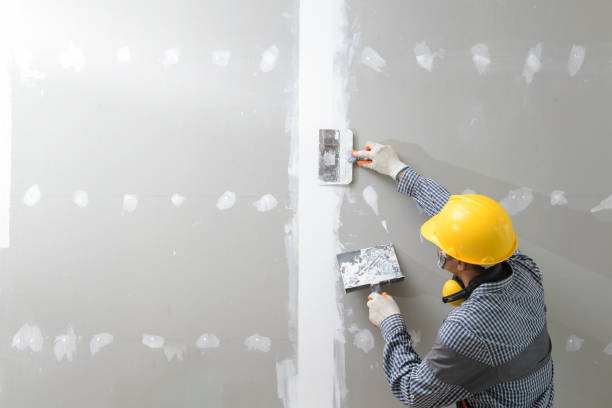
Drywall installation is a vital part of most interior construction and remodeling projects. When done professionally, it results in smooth, durable walls that provide the perfect canvas for painting and finishing. Whether you're upgrading your home or working with a >construction company on a new project, understanding the essential steps of drywall installation can help you appreciate the work involved and make more informed decisions. Upgrading Drywall installation in Jacksonville FL is a smart investment in both the functionality and visual appeal of your property.

The first step in any drywall installation project is to evaluate the area where the drywall will be placed. Professionals measure the space accurately to determine the number of drywall sheets needed. This planning also includes identifying potential challenges such as electrical wiring, plumbing lines, or unique architectural features. Aconstruction company will ensure that everything is accounted for before the installation begins, helping avoid costly mistakes or delays.
Before any drywall is attached, the framing and wall structures must be properly prepared. This means checking for even studs, ensuring no protruding nails or screws, and verifying that the structure is level. In some cases, demolition services may be necessary to remove old or damaged materials to make way for new drywall. Preparation is key to achieving a clean and professional result.
Drywall sheets must be cut to fit the dimensions of the room precisely remodelling services in Jacksonville FL This includes making cutouts for electrical outlets, light switches, windows, and doors. Precision during this phase ensures that the installation process goes smoothly and that no time is wasted on adjustments later. The sheets are usually scored with a utility knife and snapped to the required size before being secured to the wall framing.
The actual installation involves lifting the drywall sheets and attaching them to the wall or ceiling using drywall screws or nails. A drywall lift might be used for ceiling installations. The goal is to place the sheets tightly together while avoiding unnecessary gaps. During professional drywall installation in Jacksonville FL, technicians ensure the sheets are flush with one another to create a smooth surface.
Once all the sheets are securely in place, the seams between the panels are taped. Joint tape is applied over these seams to cover any gaps and help create a unified surface. This process requires precision and experience to avoid bubbling or uneven application. Many remodeling services include this taping as part of a full-service drywall job.
After the tape is applied, joint compound—also known as "mud"—is spread over the seams and screw holes. This compound is layered in several thin coats, with each layer allowed to dry before the next is applied. A professionalconstruction company will ensure this step is performed with attention to detail, creating a seamless finish.
Once the joint compound is dry, it's sanded to a smooth, flat finish. This step is critical to preparing the drywall for paint or wallpaper. Professionals use specialized sanding tools and techniques to eliminate any bumps or ridges. They also take care to minimize dust, which is essential for maintaining a clean worksite and preserving indoor air quality.
Quality control is a major part of professional drywall installation. After sanding, the entire surface is inspected to identify imperfections or areas that need touch-ups. Any rough patches are smoothed out, and additional compound is applied as necessary. This ensures that the finished surface is flawless and ready for finishing treatments.
Though technically beyond the drywall installation process, priming and painting are often the next logical steps. A well-primed drywall surface holds paint better and provides a more vibrant finish. Remodeling services usually offer this as part of their packages, especially when completing a full room or home renovation. This phase enhances both the durability and appearance of the walls.
Once all steps are completed, the work area is cleaned thoroughly. Any leftover materials are disposed of properly, and the newly installed drywall is reviewed with the homeowner. This review includes walking through the work area, checking the finish, and ensuring all expectations have been met. In Jacksonville FL, professional installers often provide ongoing support in case any touch-ups or follow-up services are needed.
Choosing a qualified team for your drywall installation in Jacksonville FL is essential for achieving professional results. A reputable construction company understands the local building codes, uses high-quality materials, and employs skilled workers who know how to handle every aspect of the job. Ifdemolition services are required beforehand, or if you're planning more comprehensive remodeling services, hiring the right professionals will make all the difference in the final outcome.
Professional drywall installation is more than just attaching panels to a wall—it's a detailed process involving precise measurement, preparation, taping, finishing, and inspection. Whether you're embarking on a new build or renovating an older space, upgrading Best Drywall installation in Jacksonville FL with experienced professionals will ensure your project is smooth, efficient, and long-lasting. With integrated demolition services, expertremodeling services, and high-quality techniques from a trusted construction company, you'll enjoy beautiful, durable walls that set the foundation for any interior design.